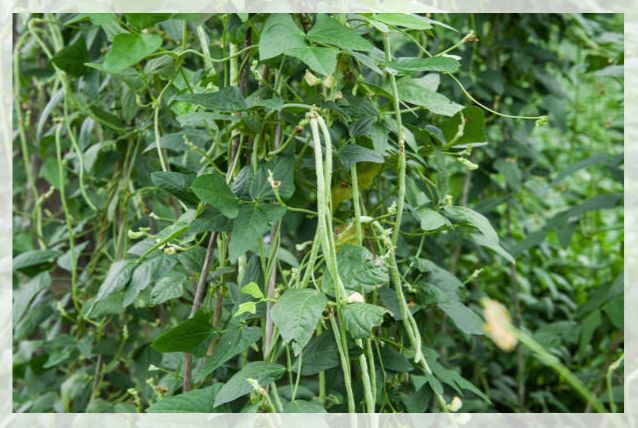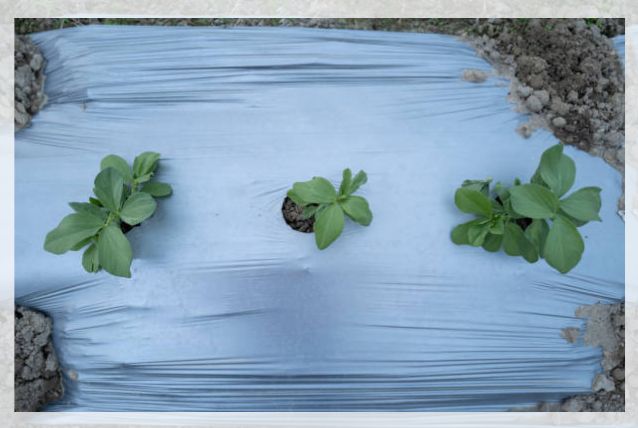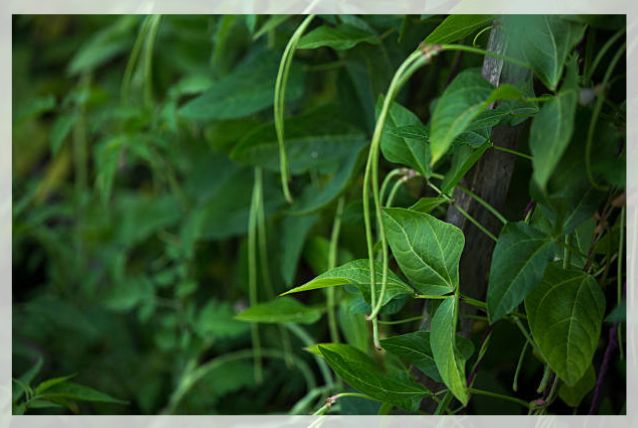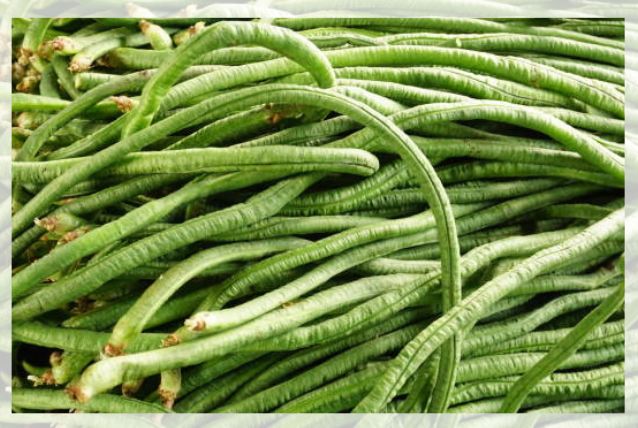Do you know that there is a humdinger of long beans out there?
Uncommon in most Americas veggie gardens, however, it is a veritable staple in a number of Asian gardens.
Chinese long beans or yard-long beans, snake beans, or asparagus beans are popular in Asian gardens.
This vegetable tends to thrive in heat and loves producing all summer long.
Not only are they high in protein, but also in vitamin B, iron, and calcium.
Moreover, these are easy to grow as well.
Make sure to plant when the danger of frost has passed, and it is even better to wait for temperatures to climb a bit when planting it.
Long bean seeds tend to sprout and grow best in warm weather and will need a long, warm growing season of at least 75 days of frost-free weather to grow.
Keep on reading.
Chinese Long Beans
Chinese long beans or yardlong beans are the subspecies of the cowpea, Vigna unguiculata.
It is an annual legume that is an important crop in a number of warm regions of the world.
Moreover, yardlong beans, subsp. sesquipedalian is related to the black-eyed peas, subsp. unguiculata and they go by many names.
These include Chinese long beans, asparagus beans, pea beans, and snake beans.
These beans live up to their name, often growing up to 3 feet in height, though you can eat them often before they reach their mature size.

It is important to note that they are especially popular in Chinese and other Asian cuisines with a taste that is less astringent than string beans, Phaseolus vulgaris.
These tend to grow quite well in most climates.
The compound leaves are bright green, with three heart-shaped leaflets.
Moreover, the flowers and resulting bean pods tend to form in joined pairs.
Flowers look as you would expect that of a legume, papilionaceous with five petals, the largest on top.
The size and color tend to vary with variety, either white, pink, or lavender.
The long vines set a copious number of delicious dangling rope-like beans throughout the summer.
And they continue to produce until the weather is cold.
In most cases, you can plant yardlong beans in spring once the soil is warm.
The seeds will emerge in 10 to 14 days after about 80 days, and you can harvest them then.
Quick Facts about Long Beans
Some quick facts about long beans are:
| Botanical Name | Vigna unguiculata subsp. |
| Common Name | Chinese long beans, asparagus beans, yardlong beans |
| Plant Type | Annual vegetable |
| Size | 8 to 12 ft. |
| Sun Exposure | Full sun |
| Soil Type | Dry, sandy |
| Soil pH | 6.0 to 7.5 (slightly acidic to slightly alkaline) |
| Hardiness Zones | Annual, grown mostly in warm zones |
| Native Area | Africa |
Planting Long Beans
You can directly sow the yardlong beans after all danger of frost passes and the soil is at least 60 degrees Fahrenheit.
However, if you are worried about not having a long enough season for the plant to mature, you can warm the soil by covering it with black plastic a few weeks before your last frost date.
Sow the seeds about 1 inch deep, spacing about 3 inches apart.
Make sure that you space the rows at least 24 inches apart.
Moreover, thin out the plants to a 6-inch spacing as the seedling emerge.
In warmer zones, you can succession plant two or three times at two-week intervals, and plate a late summer or fall crop as well.

As long beans are legumes, they can benefit from applying a soil inoculant before planting.
You can coat the seeds with inoculant with the help of plants to take nitrogen from the air to use as fertilizer.
Furthermore, yardlong beans have long vines, often growing 8 to 12 feet tall.
Except for dwarf, and bush varieties, you will need to give them tall support or grow them with a fence.
You can put your trellis or other support in the ground at planting time.
However, if you can reach to harvest it, a teepee of 7 feet is a good size for the bans to scramble on.
Do not make the poles any larger than 2 inches in circumference, so that the vines can take hold.
Learn more about Indoor Vine Plants that will look Great here.
Long Beans Care
When caring for yardlong beans, keep in mind the following:
Light: These beans will need a full sun spot.
The shade tends to reduce flowering and bean production.
Soil: These beans are not finicky about soil pH, however, they will do best with a pH between 6.0 and 7.5.
Moreover, yardlong beans tend to be true legumes, so soil without too much organic matter is ideal for them.
Too much nitrogen will result in more leaves than beans, and these plants will do well in dry, sandy soil.
Water: Though these beans are drought-tolerant, prolonged dry spells will make the pod tough and they will not grow as long as they should.
In ideal cases, give these beans an inch of water each week.
Temperature and Humidity: These beans grow tall before setting flowers and need a long, warm period early in the growing season.
Do not be surprised if they do not take off until the temperature heats up and stays there.
In ideal cases, growing temperatures are 70 and 80 degrees Fahrenheit.

Moreover, they tend to stop growing as the weather cools down in the fall.
These beans are native to arid regions and they grow equally in dry and humid environments.
Fertilizer: Like other legumes, yardlong beans will not need supplemental feeding as they tend to fix their own nitrogen from the air.
Yardlong Bean Varieties
Some popular long bean varieties are:
‘Liana’: It is a dry-neutral variety that tends to start producing early in the season and will germinate after 70 days.
It is also recommended as a fall crop in warm climates.
‘Purple Podded’: This one is a great choice for hot climates.
Moreover, it tends to retain its color when you stir-fry it and this variety takes 90 days to mature.
‘Red Noodle’: This one is just like Purple Podded, however, more flavorful with a crunchier texture.
Seed germination to harvest times is 95 days.
‘Stickless Wonder’: This one is an unusual dwarf variety.
The vines only grow about 30 inches tall and will not need trellising.
Moreover, the plant will start flowering early in 40 days, however, like many bush beans, they do have as long a season as taller vining varieties.
Seed germination to harvest is often about 54 days.
‘Yard Long’ (white seeded, black seeded, red seeded, extra long): You can find seed packets labeled as Yard Long Beans.
However, there are subtle differences between varieties.
Any of the green varieties tend to offer a good place to start experimenting and thy mature in about 90 days.
Harvesting and Propagation
It is important to note that it can often take two to three months for yard-long beans to start flowering from the seed.
And the beans tend to follow in about two weeks.
Once the beans form, it will not take long for them to start growing longer and longer.
The beans will lose their dense, crispiness as the seeds inside fill out.
So make sure to harvest them while they are still firm, often between 8 and 12 inches long and thinner than a pencil.
Once the beans start producing, you may need to harvest them daily to keep the plant productive.
Moreover, you can keep the beans in for a number of days in the refrigerator.
The pod tends to grow in pairs, which often makes harvesting a little easier.

Furthermore, you can choose to use yard-long beans interchangeably with green beans.
However, they tend to shine in stir-fried dishes, where they lend a mysterious flavor.
These are the beans traditionally used for the Chinese green bean dish offered on many Chinese restaurant menus.
You can also cook them with fermented bean curd.
You can choose to save the seeds of the beans for planting the following spring.
Allow the beans to fully dry on the stalks before harvesting them and break them open to collect the seeds.
Common Pests and Diseases
It is important to note that yard-long beans are not as prone to bean beetle damage as green beans are.
It is the small, unnoticed pests you will need to be on the lookout for.
These include:
- aphids
- thrips.
These tend to affect your beans especially early in the season.
Unfortunately, tender shoots and leaves are also attractive to deer, rabbits, groundhogs, and other small animals.
The only prevention, however, for your beans is sturdy fencing.






Leave a Reply